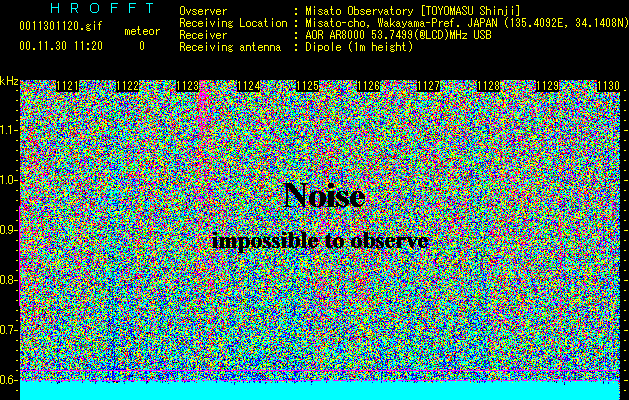How to Count (HROFFT)
This software was made by K.Ohkawa (JAPAN). It works under the Windows operating system. Date for 10 minutes preserve as one image. So, for 1 day, we can get 144 images!! The file size of one image is usually 20KB-40KB. The following figure is the data gotten by HROFFT.
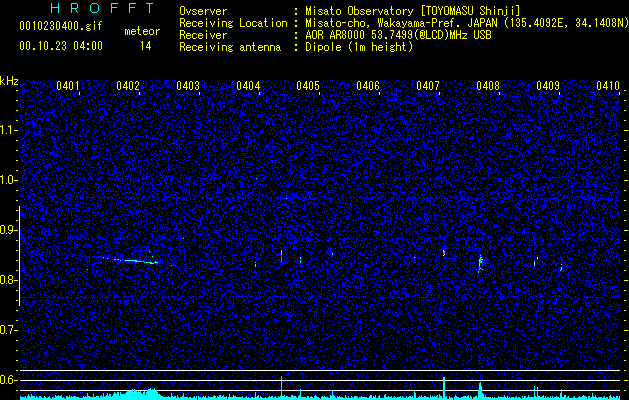
This is the observational data. Its file size is 31KB.
(Attention:The upper figure is pressed(change 256 colors into 16 colors) because of curtailment of file size.)
The following figure is meaning of data.
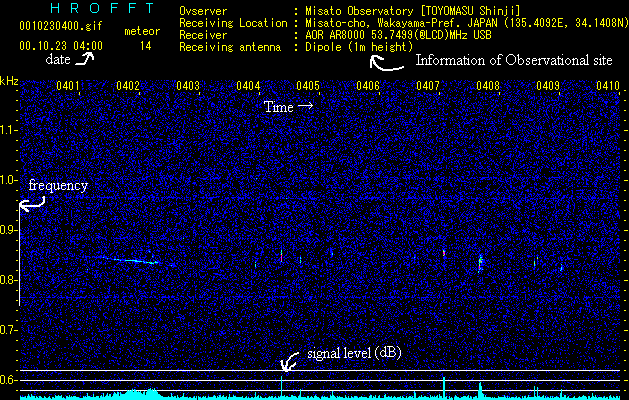
On upper figure, meteors are lengthwise lines. These are radio wave(echo) reflected by meteor. On the left hand, we can see horizontal line. This is plane. The frequency is changed by Doppler-effect. The following figrue is to be arranged upper explanations.
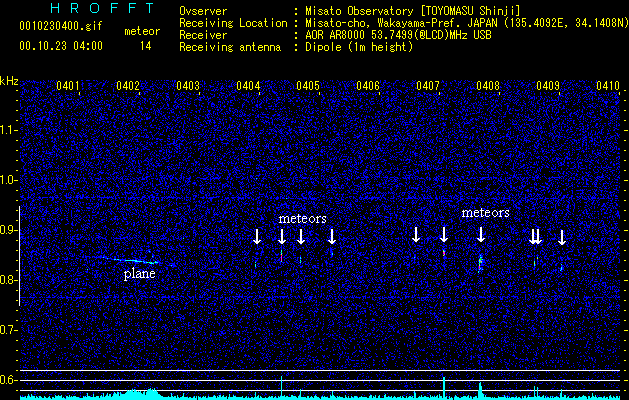
Like upper figure, we record the number of echoes every one hour. Also, sometimes, we can get very long echoes. The following figure is data in Leonids.
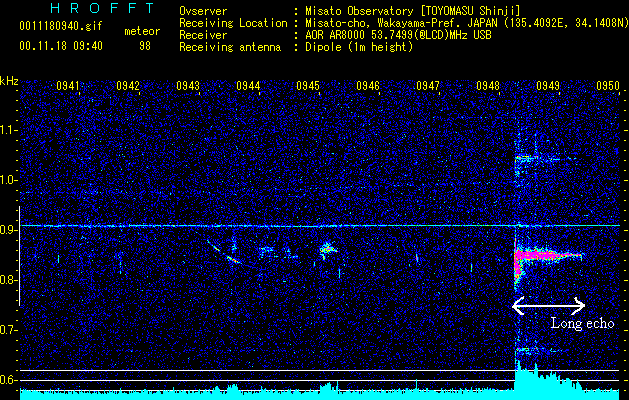
1 dot is 1 second. So, you can see how long did the echo keep. It seems the long echoes is occured by meteor trail. At the same time, we can think that the meteor is big. At Misato Observatory, the echo which keeps more than 20 seconds is long echo. At Chigusa High School, however, the echo which keeps more than 10 seconds is long echo. Because the surrounding environment of Chigusa High Schol is worse than the difintion of long echo.
In addition, when activity of the sun is active. Sporadic-E, radio noise or interference occur. When these occur, we can’t observe.
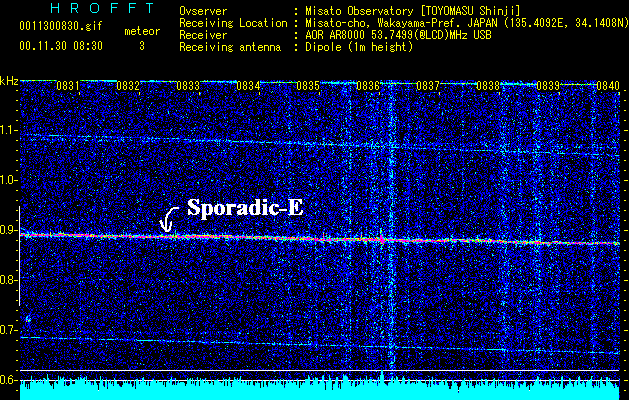
Upper: Sporadic-E (sign:Es, file size:61KB) / Following: interference (sign:IF, file size:93KB)
(Attention: The upper figure is pressed(change 256 colors into 16 colors) because of curtailment of file size.)
